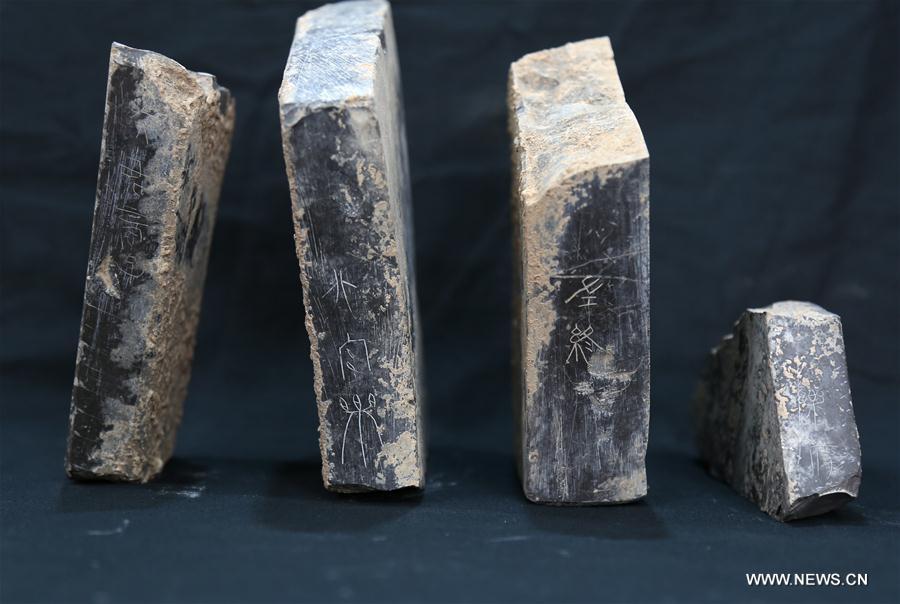
File photo shows chime debris with inscriptions at the ruins of a government office building, which was believed to be a musical department of the Qin Dynasty (221-207 B.C.), in northwest China's Shaanxi Province. The ruins, 110 meters long and 19.5 meters wide, were composed of four rooms of equal area, with clay walls of around 3 meters thick, said Zhang Yanglizheng, assistant researcher with the provincial research institute of archaeology. In addition to architecture materials, such as tiles and bricks, pieces of stone chimes, a percussion instrument in ancient China, were found in the ruins excavated in Xixian New Area. (Xinhua/Li Yibo)
XI'AN, Jan. 29 (Xinhua) -- Archaeologists in northwest China's Shaanxi Province have unearthed the ruins of a government office building, which was believed to be a musical department of the Qin Dynasty (221-207 B.C.)
The ruins, 110 meters long and 19.5 meters wide, were composed of four rooms of equal area, with clay walls of around 3 meters thick, said Zhang Yanglizheng, assistant researcher with the provincial research institute of archaeology.
In addition to architecture materials, such as tiles and bricks, pieces of stone chimes, a percussion instrument in ancient China, were found in the ruins excavated in Xixian New Area.
Xu Weihong, excavation team leader of the institute, said 23 pieces of the chime debris were found with inscriptions saying "beigongyuefu," meaning "musical department of the north palace."
"The inscriptions have proved the building used to be the government office of the musical department in ancient city of Xianyang in the Qin Dynasty," she said.
Archaeologists also found burned signs, including cracks on the chime pieces.
Xu said two of the four rooms were empty, which may have indicated that the former office had been looted before being burned.
"Except the chimes that were smashed to pieces, the other stuff in the rooms may have been burgled, with inflammable objects burned to ashes," she said, estimating the looting may have been connected to the uprising that ended the Qin emperor's reign.
Historical records show that Xiang Yu, a prominent military leader and political figure during the late Qin Dynasty, set a fire after occupying Xianyang, the then capital.
Shaanxi is famous for its rich archaeological resources, including the Mausoleum of Qinshihuang and the Terracotta Warriors.















